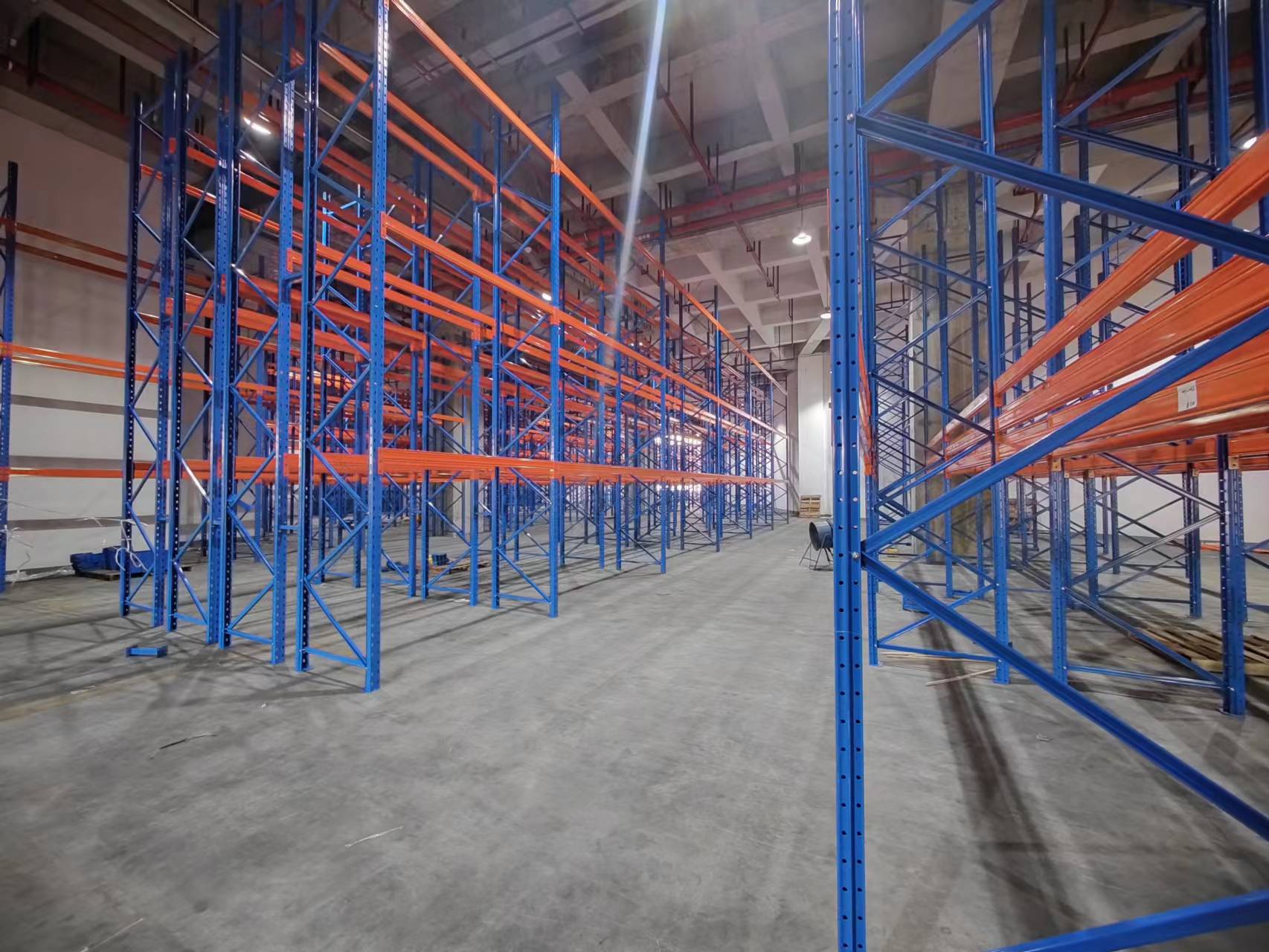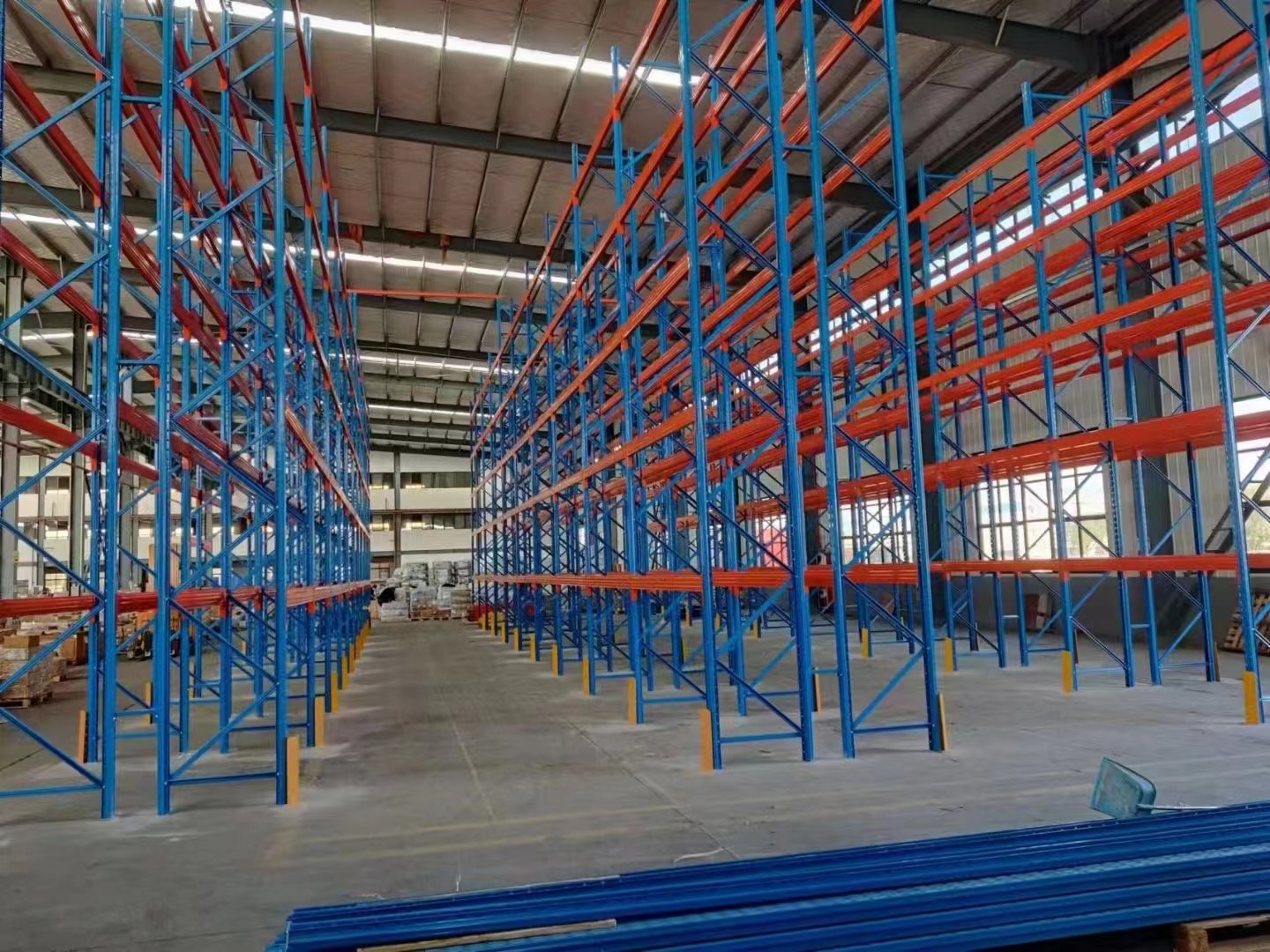In the relentless pursuit of faster fulfillment, reduced costs, and maximized space utilization, warehouses and distribution centers worldwide are turning to advanced technological solutions. At the forefront of this transformation are Automated Pallet Racking Systems (APRS). These sophisticated systems represent a quantum leap beyond traditional static racking, integrating robotics, software intelligence, and high-density storage structures to create highly efficient, hands-off material handling environments. This comprehensive guide explores the critical aspects of automated pallet racking systems, detailing how they function, their benefits, and why they are becoming indispensable in modern logistics.

1. Core Technology and Components: The Engine of Automation
Automated pallet racking systems are far more than just metal structures. They are complex ecosystems comprising several integrated technologies:
High-Density Racking Structures: The foundation is typically a very narrow aisle (VNA) racking system, often mobile racking, or specialized deep-lane storage like shuttle racking. These designs maximize cubic space utilization, often reaching heights exceeding 40 feet.
Automated Storage/Retrieval Systems (AS/RS): These are the robotic workhorses. Cranes (stacker cranes) travel within the racking aisles, equipped with telescopic forks or specialized platforms. They receive instructions from the Warehouse Management System (WMS) to precisely store or retrieve pallets from any location within the system. Types include Unit Load AS/RS (for whole pallets) and Shuttle Systems (where autonomous shuttles operate within a single level of racking).
Material Handling Interfaces: Pallets enter and exit the automated pallet racking system via conveyors, automated guided vehicles (AGVs), or autonomous mobile robots (AMRs). These seamlessly transport pallets between the AS/RS, inbound receiving, outbound shipping, and other processing areas like stretch wrapping stations.
Warehouse Management System (WMS) & Warehouse Control System (WCS): The brain of the operation. The WMS manages inventory data, order processing, and overall strategy. The WCS acts as the real-time traffic controller, translating WMS orders into specific commands for the cranes, shuttles, and conveyors, optimizing movement sequences and prioritizing tasks.
Sensors and Safety Systems: A network of sensors (lasers, cameras, barcode/RFID readers) ensures precise positioning, inventory tracking, and collision avoidance. Comprehensive safety systems, including light curtains, emergency stops, and physical barriers, protect personnel and equipment.
2. Unlocking Space Utilization and Warehouse Density
One of the most compelling arguments for automated pallet racking systems is their unparalleled ability to maximize warehouse space:
Extreme Vertical Storage: AS/RS cranes can operate safely and efficiently in aisles as narrow as 5-6 feet and at heights impractical for traditional forklifts, dramatically increasing storage capacity within the same footprint.
Elimination of Aisles: Unlike conventional warehouses requiring wide aisles for forklift maneuverability, APRS operate in ultra-narrow aisles. Some configurations, like mobile racking or deep-lane shuttle systems, even eliminate permanent aisles altogether, only creating an access path when needed for a specific lane.
Optimized Cube Usage: Sophisticated WMS/WCS software continuously analyzes inventory profiles and storage patterns, ensuring pallets are placed in the most space-efficient locations based on size, weight, and turnover rate. This minimizes wasted air space within the racking.
High-Bay Warehousing: Automated pallet racking systems make constructing and operating high-bay warehouses (30m+/100ft+) feasible and safe, multiplying storage capacity on existing land.

3. Boosting Throughput, Accuracy, and Operational Speed
Speed and precision are critical competitive advantages, and APRS deliver significantly:
24/7 Operation: Unlike human operators, automated systems can run continuously with minimal breaks, dramatically increasing the number of pallet movements per hour and enabling round-the-clock fulfillment.
Faster Cycle Times: Automated cranes and shuttles move at high speeds with pinpoint accuracy, accelerating both storage and retrieval processes. Direct access to any pallet location eliminates time wasted traversing long aisles.
Enhanced Order Accuracy: Barcode or RFID scanning integrated at multiple points (inbound, storage, retrieval, outbound) ensures the right pallet is always handled. Manual handling errors are virtually eliminated.
Predictable Performance: Automated pallet racking systems provide consistent, predictable throughput unaffected by operator fatigue, shift changes, or breaks, allowing for highly accurate production and shipping scheduling.
First-In, First-Out (FIFO) / First-Expired-First-Out (FEFO) Management: Software effortlessly manages complex stock rotation rules, crucial for industries like food, beverage, and pharmaceuticals.
4. Enhancing Safety and Improving Labor Dynamics
Automation profoundly impacts warehouse safety and workforce utilization:
Reduced Forklift Accidents: By minimizing or eliminating the need for forklifts in the high-density storage area, APRS significantly reduce risks associated with collisions, tip-overs, and pedestrian impacts – historically major sources of warehouse injuries.
Safer Working Environment: Personnel are largely removed from high-risk areas like narrow aisles with moving equipment or elevated storage levels. Automated systems handle heavy pallet lifting and placement.
Ergonomic Benefits: Eliminates the physical strain on workers from repetitive heavy lifting, climbing, and operating forklifts in confined spaces.
Labor Optimization: While reducing the need for manual pallet put-away and retrieval labor, APRS create demand for higher-skilled roles in system supervision, maintenance, programming, and data analysis. Staff can be redeployed to value-added tasks like quality control, kitting, or customer service.
Addressing Labor Shortages: Provides a solution to the persistent challenge of finding and retaining skilled forklift operators and warehouse labor.
5. Driving Down Operational Costs and Calculating ROI
While the initial investment in automated pallet racking systems is substantial, the long-term operational cost savings and ROI are compelling:
Reduced Labor Costs: The significant decrease in manual labor required for pallet handling is a major ongoing saving, especially considering wages, benefits, training, and turnover costs.
Lower Energy Costs: Modern AS/RS cranes and shuttles are highly energy-efficient, often incorporating regenerative braking. Optimized movement patterns also reduce overall energy consumption compared to fleets of forklifts.
Decreased Product Damage: Precise robotic handling and reduced manual intervention drastically lower the incidence of pallet and product damage caused by forklift impacts or human error.
Reduced Building Costs: By maximizing storage density within an existing building, companies can delay or avoid costly expansions or new construction. High-bay automation allows for smaller building footprints relative to storage capacity.
Optimized Inventory Holding Costs: Better space utilization and inventory accuracy reduce the need for excess safety stock and minimize losses due to obsolescence or spoilage (through enforced FIFO/FEFO).
Improved Equipment Lifespan: Reduced reliance on forklifts within the storage area extends their lifespan and lowers maintenance costs associated with them.
ROI Calculation: The ROI period varies but typically ranges from 3-7 years. Key factors include facility size, throughput requirements, labor costs, product value, and the specific system configuration. Savings from labor, space, damage reduction, and improved efficiency drive the payback.
6. Integration and Future Trends
Automated pallet racking systems rarely exist in isolation. Their power is amplified through integration:
Seamless WMS/WCS Integration: Tight coupling with the Warehouse Management System is non-negotiable for real-time inventory visibility and optimized order fulfillment.
Connecting to Broader Automation: APRS integrate with inbound/outbound conveyor networks, AGV/AMR fleets for horizontal transport, automated stretch wrappers, palletizers/depalletizers, and sortation systems, creating a continuous flow of goods.
IoT and Data Analytics: Sensors embedded throughout the system generate vast amounts of operational data. Analyzing this data with AI/ML tools enables predictive maintenance (preventing downtime), further optimization of storage strategies and travel paths, and continuous performance improvement.
Goods-to-Person (G2P): APRS are often the storage backbone for G2P solutions. Instead of people walking to pick items, the system brings the required pallet or tote directly to a stationary picker, dramatically increasing picking efficiency and ergonomics.
Sustainability Focus: Future developments emphasize even greater energy efficiency (e.g., ultra-efficient motors, solar integration potential on high-bay roofs), recyclable materials, and systems designed for easier disassembly and recycling at end-of-life. AI will play an increasingly significant role in energy optimization and predictive analytics.
Automated pallet racking systems are no longer a futuristic concept reserved for industry giants; they are a viable and increasingly necessary solution for businesses seeking to thrive in the demanding landscape of modern logistics and e-commerce. By delivering unprecedented levels of space utilization, operational speed, inventory accuracy, safety, and long-term cost efficiency, APRS provide a formidable competitive edge.
The integration of robotics, intelligent software, and high-density storage transforms static warehouse space into a dynamic, responsive asset. As technology continues to evolve, with advancements in AI, machine learning, and robotics, automated pallet racking systems will become even more sophisticated, adaptable, and accessible. For businesses looking to scale efficiently, meet rising customer expectations for speed, and future-proof their operations, investing in this transformative technology is not just an option – it's rapidly becoming the strategic imperative for warehouse success. The revolution in pallet handling is here, and it's automated.







